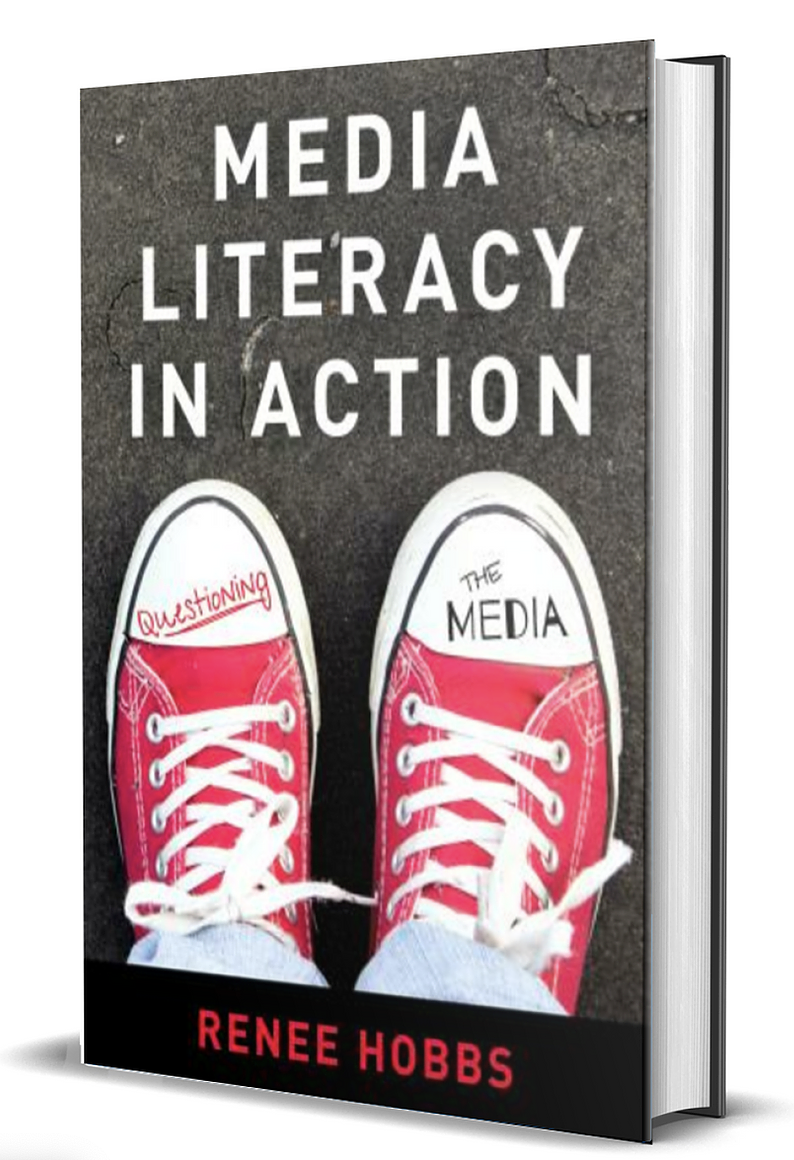 Media Literacy Theory and Vocabulary
Media Literacy Theory and Vocabulary
These concepts and terms come from Renee Hobbs' textbook, Media Literacy in Action: Questioning the Media (Rowman & Littlefield, 2021).
Authors & Audiences
AA1. Authors create media for different purposes.
AA2. Authors target specific audiences.
AA3. People make interpretations of messages that can be shaped by the context in which they experience them and the context in which they are produced.
AA4. Both authors and audiences add value to media messages as part of an economic and political system.

Messages & Meanings
MM1. Production techniques are used to construct messages.
MM2. The content of media messages contain values, ideology and specific points of view.
MM3. Messages have effects on people’s attitudes and behaviors.

Representations & Realities
RR1. Messages are selective representations of reality.
RR2. Messages use stereotypes to express ideas and information.
RR3. Authority and authenticity are features of media messages that can be assessed.

Some Definitions
accuracy: in journalism, the practice of verifying facts
analyze: to examine critically to discover or reveal something
audience: the receivers of a media message
authenticity: the characteristics of a media message that make it seem “real” and believable
author: an individual or team of people who create any type of media message
authorial intent: the set of inferences that readers or viewers make about the author’s purpose or goals as a strategy through which to critically analyze a message
authority: a person with social power rooted in their title, role, visibility, knowledge, expertise, or other qualities, or the characteristics of a media message that make it trustworthy and credible
context: the environment and background factors that influence both authors and audiences
credibility: the quality of being trusted or believed in
deconstruct: to analyze something in order to expose assumptions, inconsistencies and biases
graphic design: the art of combining images and texts in advertisements and publications
ideology: beliefs and values that form a worldview
informational text: a piece of writing written to inform readers about a particular topic, such as a magazine, textbook, biography or manual
layout: the arrangement of text and images on a page
media: the forms, formats, structures, and interfaces used for disseminating symbolic content
omissions: something that has been left out or excluded from a media message
point of view: an attitude or way of thinking about something
power/knowledge: the idea that social control is enacted through political, cultural, and social institutions that reproduce knowledge in ways that reinforce existing forms of power in societies
purpose: the intention or goal of an author in creating a media message
representation: a term used to describe the constructed nature of media depictions of people, objects, and events
stereotypes: representations that shape perceptions of reality in oversimplified ways
symbol: a thing that represents or stands for something else
target audience: a particular group at which a magazine, book, film or advertisement is aimed
typography: the style and appearance of text
values: principles, standards and judgement of what is important
visual literacy: the ability to read and create visual images